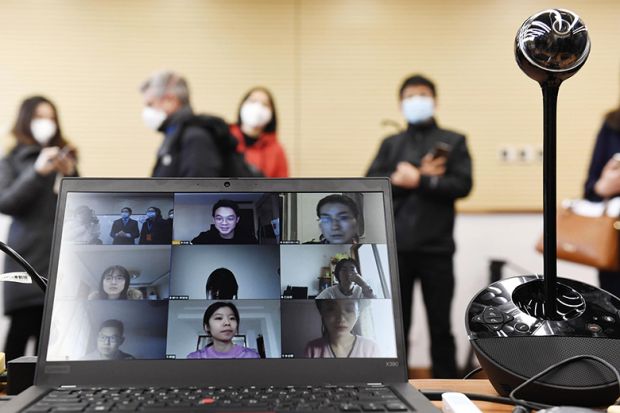Browse the full Asia University Rankings 2023 results
We are now a decade on from the emergence of massive open online courses (Moocs) in China, and the rest of the world.
New models for the delivery of education take time to develop, but we can see how the work that went into improving online education in the years preceding the Covid-19 pandemic laid a foundation for what followed, as digital delivery became a necessity.
Now, in 2023, we can reflect on the role that online education will continue to play in improving both the quality of education in China and equality of access.
At the start of the year, the World Digital Education Conference took place in Beijing, providing a spotlight for a country that has embraced digital transformation.
The context for this event was the launch last year of a new national platform, Smart Education of China, which combines learning resources, courses and online tools for every level of education, from primary to tertiary.
The goal of this initiative is clear: China is pursuing digital innovation that can help to build a society and a country in which lifelong learning is available to all.
This is a vision that we also want to extend beyond our borders, and at Tsinghua University we have first-hand experience of offering open online courses to global learners, which in turn give the world a window on China that promotes better understanding.
Is this proving effective? Feedback from students suggests that it is. I will quote just one, Tauseef Ahmad, a student from Pakistan, who said of his experience taking a course on China’s perspective on global development: “Studying with Chinese students gave me a deeper understanding of the community, and the shared future for mankind.”
That is feedback that we are proud to receive, and it demonstrates how digital education can drive change if it is delivered with a focus on quality, innovation and collaboration.
The scale of China’s ambition in this area cannot be doubted: according to the recently released China Smart Education Bluebook 2022, the number of online courses in China now exceeds 64,500, and the number of learners has reached 1 billion.
The country’s first online education platform, XuetangX, has offered more than 6,800 courses, which have engaged more than 100 million learners.
This platform also demonstrates China’s desire to engage globally: in February 2022, for example, XuetangX joined hands with 34 renowned Chinese universities to make 108 Moocs freely available to Indonesian learners.
Similarly, one of Tsinghua’s own postgraduate courses, China’s Perspective on Global Development Initiative, has attracted 17.2 million learners from many countries.
Digital innovation is also facilitating new collaborations between universities.
Despite being thousands of kilometres apart, Beijing-based Tsinghua and Qinghai University on the Tibetan plateau have, via a joint initiative, allowed students at the two institutions to become classmates, transcending time and space.
Xu Pengda, a student from Qinghai, is among those to have synchronously attended a Tsinghua course through a feature on the Rain Classroom platform known as “Clone Class”. “Digital education allows us to achieve cross-regional and cross-university learning through the internet,” says Xu.
Why does this sort of collaboration matter? Chinese universities are committed to promoting pluralism and diversity of teaching and learning, as well as to extensive sharing of high-quality educational resources.
This commitment was made clear in a speech by Huai Jinpeng, China’s minister of education, at the World Digital Education Conference.
As elsewhere, Chinese universities responded to the disruption of the pandemic by developing hybrid teaching to advance and upgrade traditional classroom methods. They also use technology to share educational resources in real time: Tsinghua, for example, has opened more than 190 premium courses to sister universities online, reaching nearly 20,000 teachers and students.
This is a process that will continue as technology opens the door to new approaches for mobilising resources nationwide, for improving the quality of teaching in less advanced regions, and for collaborative contributions and mutual learning.
Our goal is to build a “community of learning for mankind” – one that bridges the digital divide, reduces the trust deficit and maximises the positive impact of education.
This will only become more important as the pace of technological change speeds up: the era of artificial intelligence poses a thrilling challenge and opportunity for the education sectors of China and the world. It is one that we must rise to together.
Bin Yang is vice-president of Tsinghua University.
Register to continue
Why register?
- Registration is free and only takes a moment
- Once registered, you can read 3 articles a month
- Sign up for our newsletter
Subscribe
Or subscribe for unlimited access to:
- Unlimited access to news, views, insights & reviews
- Digital editions
- Digital access to THE’s university and college rankings analysis
Already registered or a current subscriber? Login









